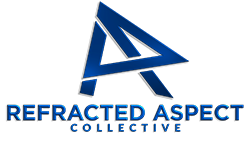
When the pressure mounts and the business feels like it’s running on the edge of chaos, the systems you rely on start to show their cracks. You know the frustration: processes that once worked now slow everything down. The team is stretched thin, and the gaps in your operations aren’t just inefficiencies—they’re risks. This is where an operations consultant steps in, not to patch holes, but to build frameworks that hold up as you grow.
- Operations Consultants Confront the Hidden Frictions of Growth
- Why Operational Blind Spots Persist Despite Best Intentions
- Scaling Requires Shifting from Reactive Fixes to Proactive Systems
- Common Operational Assumptions Can Mask Real Risks
- Operational Clarity Unlocks Leadership Focus and Business Resilience
- Five Practical Actions to Strengthen Your Operational Systems
- Operational Excellence Is a Leadership Discipline, Not a Project
- How Refracted Aspect Can Help You See What’s Hidden
Operations Consultants Confront the Hidden Frictions of Growth
There’s a persistent tension in scaling businesses. Founders and operators often find themselves caught between the urgency of daily fires and the need for sustainable systems. The truth is, the operational challenges aren’t always visible until they become critical.
It’s not just about fixing what’s broken. It’s about recognizing the subtle frictions that slow decision-making, obscure accountability, and fragment execution. These issues don’t announce themselves loudly. They creep in through inconsistent processes, unclear roles, and outdated workflows.
When you’re deep in the trenches, it’s easy to mistake symptoms for causes. The real challenge is that these operational gaps are often embedded in the company’s culture and mental models. They resist quick fixes and demand a strategic, disciplined approach.
Why Operational Blind Spots Persist Despite Best Intentions
Operational challenges stick around because they’re rarely just technical problems. They’re symptoms of deeper systemic blind spots. Market conditions shift, but internal structures lag behind. Founders and leadership teams often carry flawed mental models about how work should flow and how decisions get made.
Resistance to change isn’t always about stubbornness. It’s often about uncertainty—uncertainty about what to change, how to measure success, and who owns the outcomes. This creates a cycle where operational issues are deprioritized or ignored until they become urgent crises.
Ignoring these blind spots is risky. It leads to fragile revenue streams, inconsistent customer experiences, and burnout among key team members. The cost isn’t just operational—it’s strategic. Without clarity and structure, scaling becomes guesswork.
Scaling Requires Shifting from Reactive Fixes to Proactive Systems
Building systems that scale means moving beyond firefighting. It means designing operations with foresight and discipline. Systems are not just processes; they are the architecture of your business’s future.
This shift demands a new perspective: viewing operations as a strategic asset rather than a cost center. It requires understanding that every process, every handoff, and every decision point either adds friction or creates flow.
When you embrace this mindset, you start to see operational clarity as a multiplier. It frees leadership to focus on growth, innovation, and market positioning instead of daily troubleshooting.
Common Operational Assumptions Can Mask Real Risks
Relying on informal communication and tribal knowledge is a trap. It feels efficient until key people leave or priorities shift. What seems like agility often hides a lack of repeatability and accountability.
Another misconception is that technology alone will solve operational challenges. Tools are enablers, not solutions. Without clear processes and ownership, technology can amplify confusion rather than reduce it.
Finally, many leaders underestimate the importance of aligning operations with strategic goals. Operations should not be siloed. When disconnected from the broader business strategy, operational improvements become isolated wins with limited impact.
Operational Clarity Unlocks Leadership Focus and Business Resilience
Operational clarity is the foundation of strategic leadership. It creates a shared language and framework for decision-making. When systems are clear, leaders can delegate confidently and measure progress objectively.
This clarity also builds resilience. It reduces the risk of single points of failure and creates predictable outcomes. The business becomes less dependent on individual heroics and more on repeatable, scalable processes.
Ultimately, investing in operational clarity is investing in the business’s ability to adapt and thrive. It’s a quiet, steady force that underpins sustainable growth.
Five Practical Actions to Strengthen Your Operational Systems
- Map your core processes end-to-end. Identify every step, decision point, and handoff. This reveals hidden bottlenecks and clarifies ownership.
- Establish clear roles and accountability. Define who is responsible for outcomes, not just tasks. This reduces overlap and confusion.
- Implement regular operational reviews. Use data and feedback to assess system performance and adjust proactively.
- Standardize communication protocols. Ensure consistent information flow across teams to prevent misunderstandings and delays.
- Invest in scalable technology thoughtfully. Choose tools that support your processes and integrate well, avoiding unnecessary complexity.
Operational Excellence Is a Leadership Discipline, Not a Project
Operational challenges don’t disappear with a single intervention. They evolve as the business grows and markets shift. Leadership’s role is to maintain focus on operational clarity as a continuous discipline.
This means resisting the urge to chase quick fixes or shiny new tools. Instead, it requires steady attention to the fundamentals: clear processes, aligned teams, and measurable outcomes.
When operations are treated as a strategic function, the business gains a reliable foundation. This foundation supports not just growth, but adaptability and long-term resilience. It’s a quiet truth that separates sustainable businesses from those that struggle under their own complexity.
How Refracted Aspect Can Help You See What’s Hidden
Most businesses we work with aren’t short on effort — they’re short on clarity. Marketing feels active, but results are inconsistent. Sales teams are busy, but the pipeline is fragile. Strategy gets discussed, but execution drifts. Underneath it, the structure is stretched, and accountability is fuzzy. That’s when a proper diagnostic helps.
Refracted Aspect offers a range of Health Checks designed to reveal what’s working, what’s missing, and what’s quietly getting in the way. The Revenue Health Check focuses on sales, lead generation, and pricing to uncover hidden barriers to growth.
If clarity’s the goal, this is the first step.
















